#interstellar cloud
Explore tagged Tumblr posts
Text
Scientists scour the Earth and the sky for clues to our planet's climate history. Powerful and sustained volcanic eruptions can alter the climate for long periods of time, and the Sun's output can shift Earth's climate over millions of years. But what about interstellar hydrogen clouds? Can these regions of gas and dust change Earth's climate when the planet encounters them? Interstellar clouds aren't all the same. Some are diffuse, while some are much denser. New research in Nature Astronomy says that our Solar System may have passed through one of the dense clouds two or three million years ago. The effect could've altered the chemistry of Earth's atmosphere, affecting cloud formation and the climate.
Continue Reading.
137 notes
·
View notes
Text
Vibe Check Your Vocab
Citlali: Just because I've lived for a long time doesn't mean I'm out of touch, okay?! I can be hip, I can be "with it"! Come on, ask me any question that a young person would know the answer to. I'll prove that I'm not some washed-up old hag!
Lumine: Are you sure you should be saying that so casually? Things could get ugly real fast if someone calls you on it.
Citlali: Of course I'm sure! I am entirely confident in my abilities! Besides, how bad could it possibly be?
Lumine: Okay, but don't say I didn't warn you. Hey Lyney, haul your twink ass over here!
Lyney: Ah, Traveler, as usual, it is always lovely to hear the dulcet tones of your voice. To what do I owe the pleasure?
Lumine: Citlali here wants to run a vibe check on her vocab.
Lyney: No cap? Alright then, Miss Citlali, say you're verbally throwing hands with some basic bitch who has too many opinions and wants to talk to your manager. You pull off an epic clapback, but you exhaust your rizz in the process and end up taking the L. Now, considering all of that, is this situation based or cringe?
Citlali: Umm... I mean, obviously... it, uh, depends...based on what?
Lyney: Hmm. Miss Citlali, I hate to be the bearer of bad news, but I'm afraid that you are, unfortunately, a boomer.
Citlali, slightly terrified: What's a boomer? Is it bad? ...am I going to explode?
Lyney: No, not at all! While you may never fully understand anything a young person says, many boomers otherwise live long, happy lives. It's nothing to be ashamed of. In fact, my "Father" happens to be a boomer herself.
Arlecchino, appearing out of nowhere: Greetings, Miss Citlali, it's a pleasure to meet you. Welcome to my ongoing linguistic nightmare.
Citlali, close to tears: Who are all you people?! I'm so confused...!
Lumine: Told ya.
#genshin impact#genshin#lumine#the traveler#citlali#lyney#arlecchino#the traveler as unhinged interstellar eldritch abomination#the knave's biggest weaknesses: gen z slang and ligma jokes#old woman yells at cloud#the teapot gets crowded sometimes#just wait until citlali meets madame faruzan#literal battle of the ages
40 notes
·
View notes
Text


The sky can be so nice sometimes...
#photo#photos#photography#photographer#nature#nature photography#cloud#clouds#cloud photography#sunset#sunset photography#interstellars photography
8 notes
·
View notes
Text

grab this image and its midjourney prompt here
#digital art#digital illustration#clouds#cloudcore#cloud aesthetic#blue clouds#starry sky#outer space#glitter clouds#galaxycore#galaxy#interstellar#mystic#fairycore#ai#ai art#ai artwork#ai art prompts#midjourney#midjourney art#ai art community
51 notes
·
View notes
Text
Welcome to Ash Does Movie Reviews That Are Clouded By Her ADHD
I’m your host, Ash (no shit) and I just watched Interstellar (spoilers because duh)
So first of all it made me cry. A lot. Like heavy sobbing. I cry a lot. If you’ve seen my blog, you know that.
Anywho, my friend decided to sit me down and watch is because according to him “it’s a cinematic masterpiece and I can’t believe you haven’t watched it” to which I responded that Arcane is a cinematic masterpiece and he hasn’t watched it (he pointed out that he’s forcing me to watch a 2h 45 min long movie and arcane is 2 seasons long and probably much more than 2h 45m. Also, apparently this came out in 2014 and Arcane came out “recently” so “theres no excuse for you not watching it”)
Now for the actual movie: At the beginning I was jump scared by Timothee Chalamalabingbong and then I had the realization that he was probably around my age (never searched it up for fear I might be right) when he did this and then I just sat there and thought about how at my age a productive day is not procrastinating and doing work for like half an hour before getting distracted (ADHD at its finest)
The acting was amazing, ten out of ten, but honestly I just kept getting distracted by the beautiful amazing breathtaking Anne Hathaway (my bi awakening in like sixth grade after I watched Devil Wears Prada). She looked amazing with the short hair (lesbean cut anyone??) and I did in fact consider cutting my hair that short because of how good it looked on her until I remembered that my relatives would most likely disown me if I did that.
Also guys was I the only one who that Murph was lesbian coded?? Idk just meee
I cried when the 23 years past and then they got the videos yall don’t understand I was ugly crying.
I saw Matt Damon and I immediately shouted “HES EVIL” because he just gave vibes. My friend side eyed me and I was so happy I was right (I like being right I’m kinda competitive it’s a problem 😭)
The whole thing where the black hole connected back was cool I loved that. It makes a lot of sense. (I predicted it from the start aheheheh)
The ending however?? Why couldn’t he have come back sooner 😭. Like I hate that. I hate it. You shouldn’t have to see your child grow old and then die after you finally got back. I was ugly crying again. I think it’s the first time I’ve seen my friend cry since we were like five.
I also don’t like the open ending because I don’t like it when a movie ends on a bittersweet moment. Like we have no idea what happened I like to know 😭
Great movie, 9.5/10. (No I wasn’t staring at Anne Hathaway the entire time, how dare you (I was))
#ash does movie reviews that are clouded by her adhd#interstellar#timothée chalamet#anne hathaway#adhd#goldengirl yaps
1 note
·
View note
Text
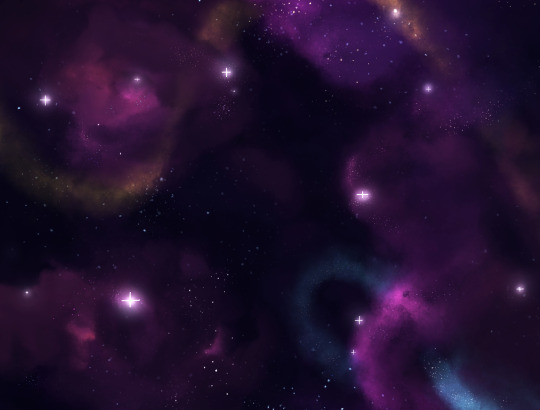
I was going for some sort of feeling.
Like the sleep ambience vibes, but also with intensity since you’re among celestial structures of incomprehensible size, so large that they look close yet in reality you’re so far that you’d never reach them within your lifetime.
your insignificance to this infinitely vast universe is what allows you to truly see how large and beautiful it is, and you’re able to be free of yourself, just for a moment, when nothing matters anymore.
The vibe wasn’t captured I don’t think but you see the vision yes
#Experience the vision#bageldoodles#Don’t see the vision but feel it#Art#digital art#digital illustration#space#outer space#Space clouds#Interstellar clouds#Nebula
1 note
·
View note
Text
Visions
(version with sound on my ig /krisjustsleeps)
#beautiful#wormhole#nebula#black hole#outer space#galaxies#astronomy#universe#aesthetic#full moon#atmosphere#nature#interstellar#stars#cosmos#cosmic#electricity#dreamcore#blood moon#clouds#weirdcore#eeriecore#oddcore#liminalcore#surreal#horrorcore#my art#dark aesthetic#liminal spaces#liminal aesthetic
3 notes
·
View notes
Photo
Photo with annotations

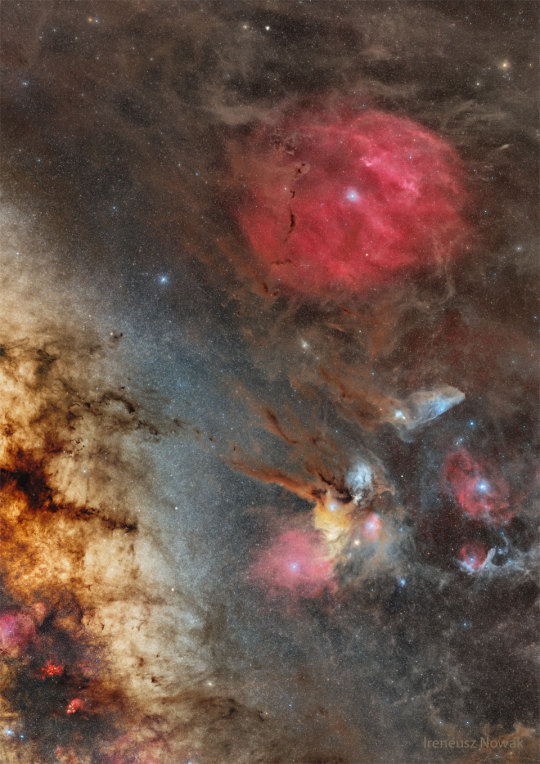
2025 May 27
Zeta and Rho Ophiuchi with Milky Way Image Credit & Copyright: Ireneusz Nowak
Explanation: Behold one of the most photogenic regions of the night sky, captured impressively. Featured, the band of our Milky Way Galaxy runs diagonally along the bottom-left corner, while the colorful Rho Ophiuchi cloud complex is visible just right of center and the large red circular Zeta Ophiuchi Nebula appears near the top. In general, red emanates from nebulas glowing in the light of excited hydrogen gas, while blue marks interstellar dust preferentially reflecting the light of bright young stars. Thick dust usually appears dark brown. Many iconic objects of the night sky appear, including (can you find them?) the bright star Antares, the globular star cluster M4, and the Blue Horsehead nebula. This wide field composite, taken over 17 hours, was captured from South Africa last June.
∞ Source: apod.nasa.gov/apod/ap250527.html
#astronomy#astronomy picture of the day#Milky Way#nebula#interstellar clouds#cloud complex#Rho Ophiuchi Cloud Complex#emission nebula#Zeta Ophiuchi Nebula#Sh2-27#Sharpless 2-27#reflection nebula#Blue Horsehead Nebula#IC 4592
118 notes
·
View notes
Text

The Cosmic Bat Nebula, LDN 43 // vikas chander
#astronomy#astrophotography#nebula#dark nebula#dust#interstellar dust#molecular cloud#star-forming region#cosmic bat nebula#LDN 43#ophiuchus
323 notes
·
View notes
Text
Asteroid grains shed light on the outer solar system’s origins
New Post has been published on https://thedigitalinsider.com/asteroid-grains-shed-light-on-the-outer-solar-systems-origins/
Asteroid grains shed light on the outer solar system’s origins
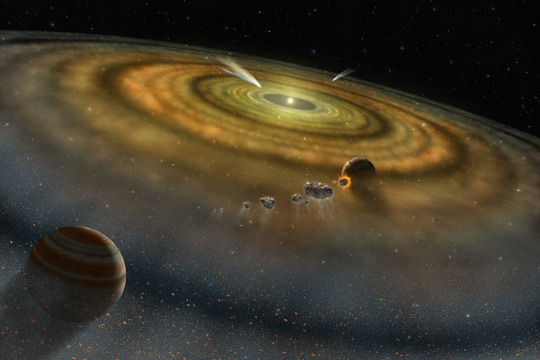

Tiny grains from a distant asteroid are revealing clues to the magnetic forces that shaped the far reaches of the solar system over 4.6 billion years ago.
Scientists at MIT and elsewhere have analyzed particles of the asteroid Ryugu, which were collected by the Japanese Aerospace Exploration Agency’s (JAXA) Hayabusa2 mission and brought back to Earth in 2020. Scientists believe Ryugu formed on the outskirts of the early solar system before migrating in toward the asteroid belt, eventually settling into an orbit between Earth and Mars.
The team analyzed Ryugu’s particles for signs of any ancient magnetic field that might have been present when the asteroid first took shape. Their results suggest that if there was a magnetic field, it would have been very weak. At most, such a field would have been about 15 microtesla. (The Earth’s own magnetic field today is around 50 microtesla.)
Even so, the scientists estimate that such a low-grade field intensity would have been enough to pull together primordial gas and dust to form the outer solar system’s asteroids and potentially play a role in giant planet formation, from Jupiter to Neptune.
The team’s results, which are published today in the journal AGU Advances, show for the first time that the distal solar system likely harbored a weak magnetic field. Scientists have known that a magnetic field shaped the inner solar system, where Earth and the terrestrial planets were formed. But it was unclear whether such a magnetic influence extended into more remote regions, until now.
“We’re showing that, everywhere we look now, there was some sort of magnetic field that was responsible for bringing mass to where the sun and planets were forming,” says study author Benjamin Weiss, the Robert R. Shrock Professor of Earth and Planetary Sciences at MIT. “That now applies to the outer solar system planets.”
The study’s lead author is Elias Mansbach PhD ’24, who is now a postdoc at Cambridge University. MIT co-authors include Eduardo Lima, Saverio Cambioni, and Jodie Ream, along with Michael Sowell and Joseph Kirschvink of Caltech, Roger Fu of Harvard University, Xue-Ning Bai of Tsinghua University, Chisato Anai and Atsuko Kobayashi of the Kochi Advanced Marine Core Research Institute, and Hironori Hidaka of Tokyo Institute of Technology.
A far-off field
Around 4.6 billion years ago, the solar system formed from a dense cloud of interstellar gas and dust, which collapsed into a swirling disk of matter. Most of this material gravitated toward the center of the disk to form the sun. The remaining bits formed a solar nebula of swirling, ionized gas. Scientists suspect that interactions between the newly formed sun and the ionized disk generated a magnetic field that threaded through the nebula, helping to drive accretion and pull matter inward to form the planets, asteroids, and moons.
“This nebular field disappeared around 3 to 4 million years after the solar system’s formation, and we are fascinated with how it played a role in early planetary formation,” Mansbach says.
Scientists previously determined that a magnetic field was present throughout the inner solar system — a region that spanned from the sun to about 7 astronomical units (AU), out to where Jupiter is today. (One AU is the distance between the sun and the Earth.) The intensity of this inner nebular field was somewhere between 50 to 200 microtesla, and it likely influenced the formation of the inner terrestrial planets. Such estimates of the early magnetic field are based on meteorites that landed on Earth and are thought to have originated in the inner nebula.
“But how far this magnetic field extended, and what role it played in more distal regions, is still uncertain because there haven’t been many samples that could tell us about the outer solar system,” Mansbach says.
Rewinding the tape
The team got an opportunity to analyze samples from the outer solar system with Ryugu, an asteroid that is thought to have formed in the early outer solar system, beyond 7 AU, and was eventually brought into orbit near the Earth. In December 2020, JAXA’s Hayabusa2 mission returned samples of the asteroid to Earth, giving scientists a first look at a potential relic of the early distal solar system.
The researchers acquired several grains of the returned samples, each about a millimeter in size. They placed the particles in a magnetometer — an instrument in Weiss’ lab that measures the strength and direction of a sample’s magnetization. They then applied an alternating magnetic field to progressively demagnetize each sample.
“Like a tape recorder, we are slowly rewinding the sample’s magnetic record,” Mansbach explains. “We then look for consistent trends that tell us if it formed in a magnetic field.”
They determined that the samples held no clear sign of a preserved magnetic field. This suggests that either there was no nebular field present in the outer solar system where the asteroid first formed, or the field was so weak that it was not recorded in the asteroid’s grains. If the latter is the case, the team estimates such a weak field would have been no more than 15 microtesla in intensity.
The researchers also reexamined data from previously studied meteorites. They specifically looked at “ungrouped carbonaceous chondrites” — meteorites that have properties that are characteristic of having formed in the distal solar system. Scientists had estimated the samples were not old enough to have formed before the solar nebula disappeared. Any magnetic field record the samples contain, then, would not reflect the nebular field. But Mansbach and his colleagues decided to take a closer look.
“We reanalyzed the ages of these samples and found they are closer to the start of the solar system than previously thought,” Mansbach says. “We think these samples formed in this distal, outer region. And one of these samples does actually have a positive field detection of about 5 microtesla, which is consistent with an upper limit of 15 microtesla.”
This updated sample, combined with the new Ryugu particles, suggest that the outer solar system, beyond 7 AU, hosted a very weak magnetic field, that was nevertheless strong enough to pull matter in from the outskirts to eventually form the outer planetary bodies, from Jupiter to Neptune.
“When you’re further from the sun, a weak magnetic field goes a long way,” Weiss notes. “It was predicted that it doesn’t need to be that strong out there, and that’s what we’re seeing.”
The team plans to look for more evidence of distal nebular fields with samples from another far-off asteroid, Bennu, which were delivered to Earth in September 2023 by NASA’s OSIRIS-REx spacecraft.
“Bennu looks a lot like Ryugu, and we’re eagerly awaiting first results from those samples,” Mansbach says.
This research was supported, in part, by NASA.
#2023#aerospace#Asteroid#asteroids#Astronomy and astrophysics#author#billion#caltech#Cloud#data#december#detection#direction#dust#EAPS#earth#form#gas#Geology#Giving#harvard#Hayabusa2 Mission#how#interstellar#it#JAXA#Jupiter#Light#magnetic field#Magnets
0 notes
Text
Iteration in Review: Iteration 2, 1st Mar - 30th Jun 2024
Last Iteration, the following happened:
1. We documented 3 new star systems on the wiki:
Eynyaev
Yanaga
Oriokin-Nagoya XIX
2. The moon chosen for demolition was selected, and is in the process of destruction.
3. DOOMCREW56 began construction of Celadet Fields, a ranch near the Capitol on Ifortc Tau.
4. An official store opened, and merch for numerous planets was announced.
5. The Capitol was completed, and the Governors opened it to the public for the second time.
6. The Domauj Boundary and Suvasaserl Cloud regions were discovered.
7. We allied with the Prometheus Collective.
8. A wikipage was made for Selbur XI, the Abandoned capital (finally)
9. noomintroll began construction of the Habitation Programme Alpha, a community housing project on Ifortc Tau designed to help any new travellers in UFIPA space find their feet.
And once again, as a final message, a traditional UFIPA farewell:
May comets carry you upon their backs and solar winds be your wings. See you in the stars, Travellers.
Join us on:
Instagram
Reddit
Redbubble
Discord
#UFIPA#United Federation of Interstellar and Planetary Anomalies#no mans sky#no mans sky civilization#nms civ#Gek#Vy’keen#Korvax#Autophage#Anomaly#Traveller Anomaly#Traveller#Eynyaev#UFIPA-12232-Eynyaev#Yanaga#UFIPA-41362-Yanaga#Oriokin-Nagoya XIX#UFIPA-62341-Oriokin-Nagoya XIX#Domauj Boundary#Suvasaserl Cloud#Ifortc Tau#Prometheus Collective#Selbur XI#Habitation Programme Alpha#Iteration in Review#see you in the stars traveller
1 note
·
View note
Link
Join us for SpaceTime Series 27 Episode 76, where we delve into the latest groundbreaking discoveries in planetary science and astronomy. First, scientists have uncovered evidence that fresh water existed on Earth about 4 billion years ago, pushing back the timeframe for the potential emergence of life by 500 million years. This discovery, based on zircon crystal analysis from the Jack Hills formation in Western Australia, challenges the long-held belief that Earth was entirely covered by oceans at that time. The study's findings suggest that fresh water and land masses existed much earlier, setting the stage for life to flourish. Next, new research indicates that the rotation of Earth's inner core has slowed down compared to the planet's surface. This discovery, reported in the journal Nature, shows that the inner core began to decelerate around 2010, moving slower than the Earth's mantle and crust for the first time in decades. The implications of this change are still being explored, but it may ultimately affect the length of the day. Finally, a new study suggests that Earth's encounter with dense interstellar clouds 2 million years ago may have significantly altered the planet's climate. The research, published in Nature Astronomy, posits that these clouds could have compressed the heliosphere, exposing Earth to increased levels of cosmic rays and altering its climatic conditions. Follow our cosmic conversations on X @stuartgary, Instagram, YouTube, and Facebook. Join us as we unravel the mysteries of the universe, one episode at a time. Sponsor Offer This episode is proudly supported by NordPass. Secure your digital journey across the cosmos with a password manager you can trust. Find your stellar security solution at https://www.bitesz.com/nordpass. Listen to SpaceTime on your favourite podcast app including Apple Podcasts, Spotify, YouTube Music, or wherever you get your podcasts. Support SpaceTime Become a supporter of SpaceTime: https://www.bitesz.com/show/spacetime/support/ www.bitesz.com
#clouds#core#crystals#cycle#discovery#early#earth's#formation#fresh#hills#history#hydrological#inner#interstellar#isotopes#jack#oxygen#seismic#water#zircon
0 notes
Text
What if a our solar system passed through a dense cloud of interstellar gas, causing the heliosphere to shrink, so that the Earth was in effect travelling unprotected through interstellar space while still in orbit around the Sun. How would that change the climate and the biosphere?
0 notes
Text
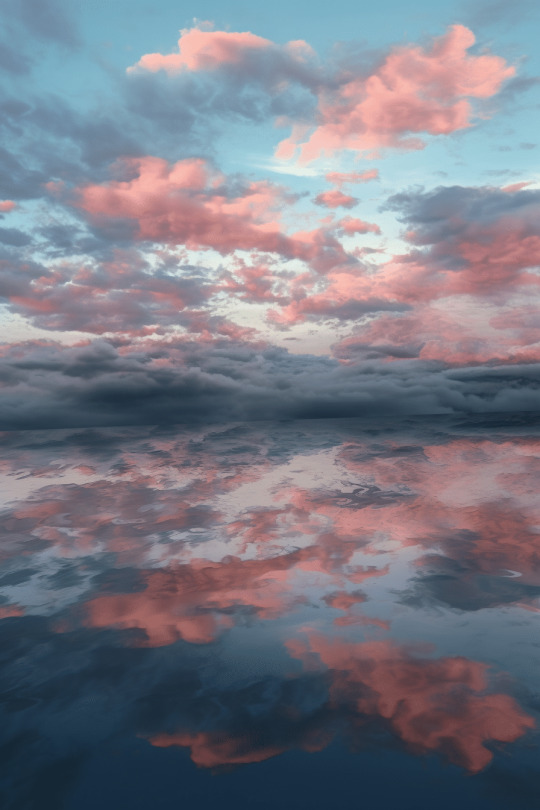
grab this image and its midjourny prompt here.
#digital art#digital illustration#digital artwork#clouds#cloudcore#cloud aesthetic#blue clouds#outer space#galaxycore#galaxy aesthetic#galaxy#mystic#sunset#pink sunset#pink clouds#cotton candy clouds#pastel clouds#cloudy sky#reflection#interstellar#fairycore#dream aesthetic#dreamcore#ai#ai art#ai artwork#midjourney#midjourney prompts#ai art community
6 notes
·
View notes
Text

🚀 A new Hayden Planetarium Space Show, narrated by Pedro Pascal, is opening June 9! In Encounters in the Milky Way, you’ll get a front-row seat to spectacular moments in our solar system's past and future, including the paths of stars, comets, interstellar debris, and visually stunning gas and dust clouds.
🌌 Developed by a team that includes astronomers, science visualization experts, and artists, Encounters in the Milky Way is made possible by data from one of the most transformative projects of the past century: the European Space Agency's Gaia mission, dubbed the "billion-star survey" for mapping the precise positions, distances, and motions of nearly 2 billion stars in our galaxy.
🔗 Learn more.
2K notes
·
View notes
Photo
[source]
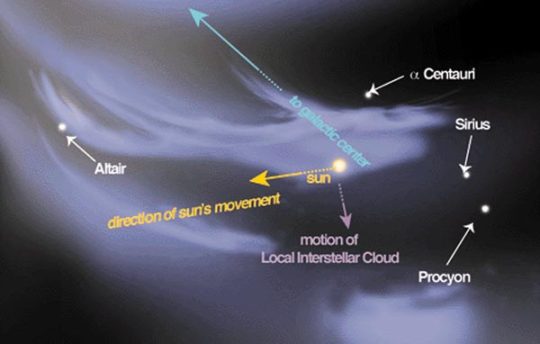
The Local Interstellar Cloud
Credits: American Scientist, Priscilla Frisch, U. Chicago
29 notes
·
View notes